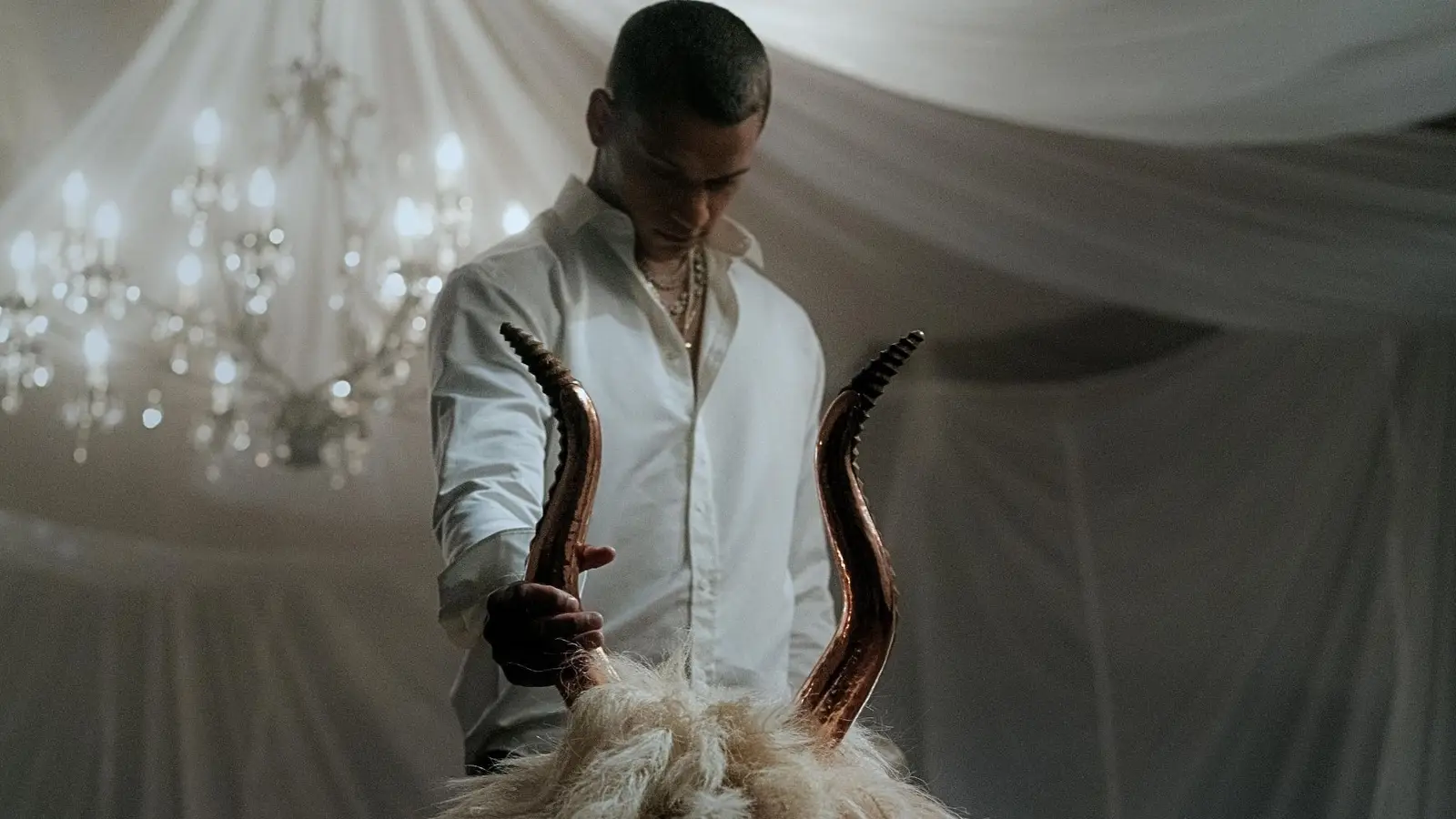
Justin Tipping’s nightmarish cult movie Him accomplishes the rare feat of combining traditional sports movie themes with outright horror, which calls into question why that mash-up doesn’t happen more often. In recent years, as a new Golden Age of Horror has taken over Hollywood, the genre has been infused with new talent that has helped push it into unfamiliar territory both in theme and in tone.
Despite horror elements invading just about every cinematic genre, sports horror movies have remained conspicuously uncommon. With its intense training sequences and hip-hop-heavy soundtrack, Him does an admirable job of maintaining its sports themes while leaning hard into cult horror elements. Even though its Rotten Tomatoes scores have been subpar, it’s still proven to be relatively unique in the modern horror space.
The movie not only capitalizes on the psychological strain of being a professional athlete, but also takes advantage of the horrific brutality of football, utilizing X-ray and infrared images to graphically highlight skeletal structures and brain injuries. With so much potential for examinations of anxiety, trauma, and loss, it seems like there should be more sports horror, but there is a good reason there isn’t.
Sports Movies And Horror Movies Are Thematic Opposites
While it’s easy to marry the common themes of horror with mystery, drama, or even comedy, it’s incredibly difficult to make a compelling match with those of the typical sports movie. Simply put, the themes that work best for sports movies simply don’t mesh with those that make for good horror.
Traditional sports movies are built around themes of perseverance, underdog determination, redemption, hope, and inspiration. Conversely, the best horror movies deal with things like grief, trauma, anxiety, and dread. The themes of those two genres clash horribly, making a good mix extremely difficult to properly execute.
While not impossible, the tones and themes of the two genres are so far apart that smashing them together actually breaks down both halves of the greater whole. If a movie is scary enough to be a good horror movie, typically the sports themes are left in the lurch. Likewise, a well-executed sports movie typically wouldn’t leave enough room for a movie to be legitimately scary.
Him is one of the only examples of a sports horror movie actually attempting that combination with any degree of seriousness. Past examples almost exclusively veer into B-movie schlock, with neither the horror nor the sports elements hitting with any level of effectiveness. Him’s reviews might be mixed, but the execution of the sports-horror combination is pretty effective.
On top of the clash in tones and themes, the audiences for sports movies and horror movies can be drastically different, making it difficult for studios to even justify an attempt. Those interested in the warmth of an inspirational sports movie like Rudy, Miracle, or Rocky are unlikely to enjoy something as grim and grisly as Hereditary, Bring Her Back, or The Conjuring, and vice versa.
Him Proves There Is More Potential For Sports Horror
It’s important to note that if anything, Him proved that the sports/horror combination can work with the proper execution. Regardless of how you feel about the movie’s quality, Him smartly meshes the ultra-dominant cultural phenomenon of professional football with the behind-the-scenes, secretive terror of cult horror.
Unfortunately, any kind of monstrous subgenre is unlikely to make for a good cross-over with sports (unless we count Teen Wolf, of course). Ghosts, vampires, and demons combined with something lighter like sports will almost certainly move a narrative towards campiness and comedy, and while it’s not impossible, it would be truly difficult to frame a legitimately scary monster movie around any kind of sport.
However, an offshoot genre like body horror has obvious potential, especially after Him touched on that with the gruesome brain injuries it depicts and its infamous football-to-the-face training scene. Some of the most infamous moments in professional sports history revolve around pain and injury, which plays right into horror’s more traditional trauma themes.
Him provides glancing blows on some of the psychological elements of professional sports that are ripe for horror exploitation, including the ever-present pressure to pursue greatness, fear of loss and becoming irrelevant, and the cost of personal sacrifice. It doesn’t really follow through on any of them in meaningful fashion, but it does demonstrate that there is plenty more gold to be mined from those hills.
While some might chafe at the comparison between the trauma (if you can call it that) that comes with the loss of a game versus the grief bred from the loss of a life, the emotional parallels exist. The darkness of obsession from both an athlete’s and fan’s perspective as it relates to professional sports is as ideal for horror as a base concept gets, especially when themes like hero worship and paranoia are infused.



